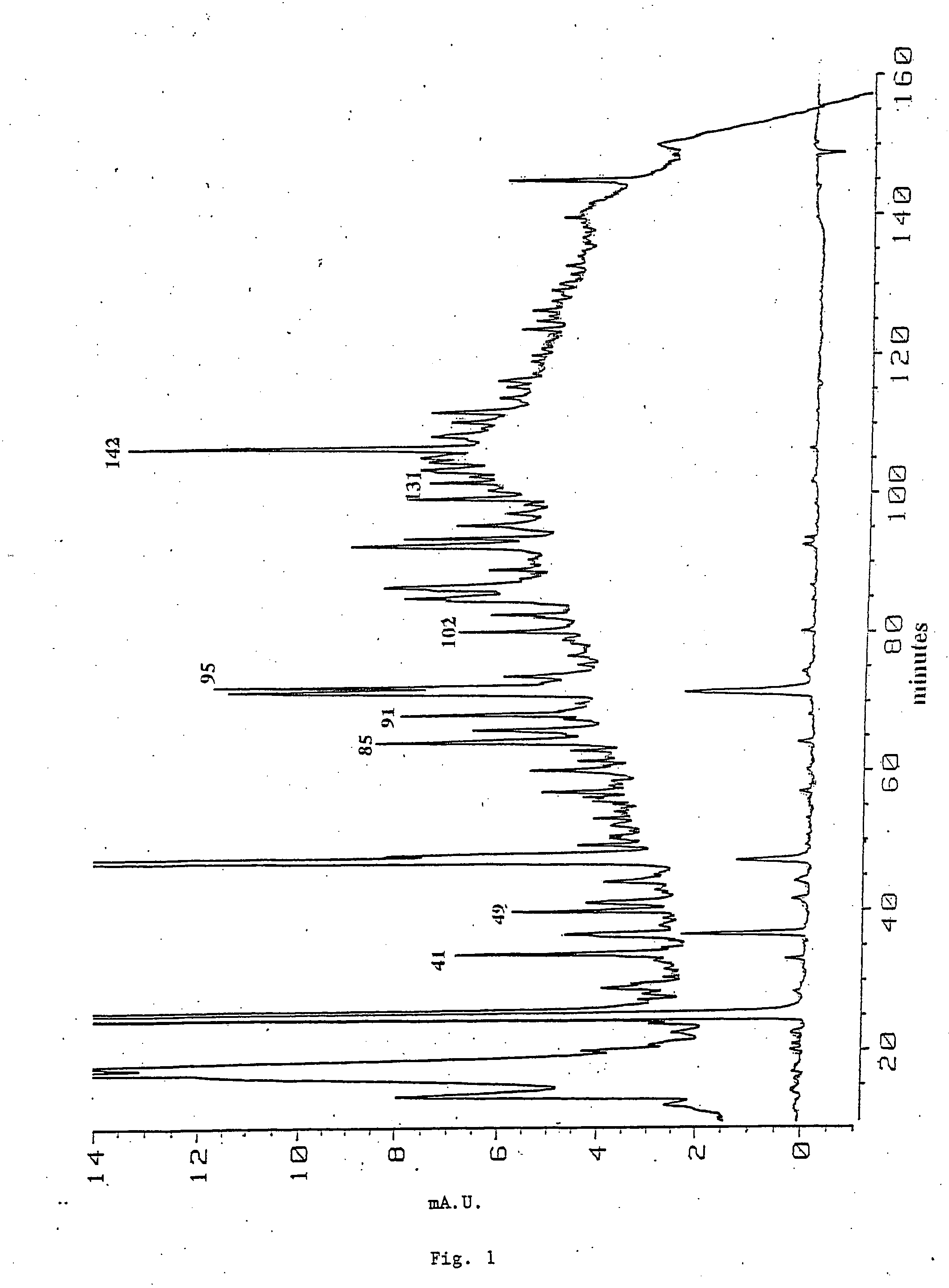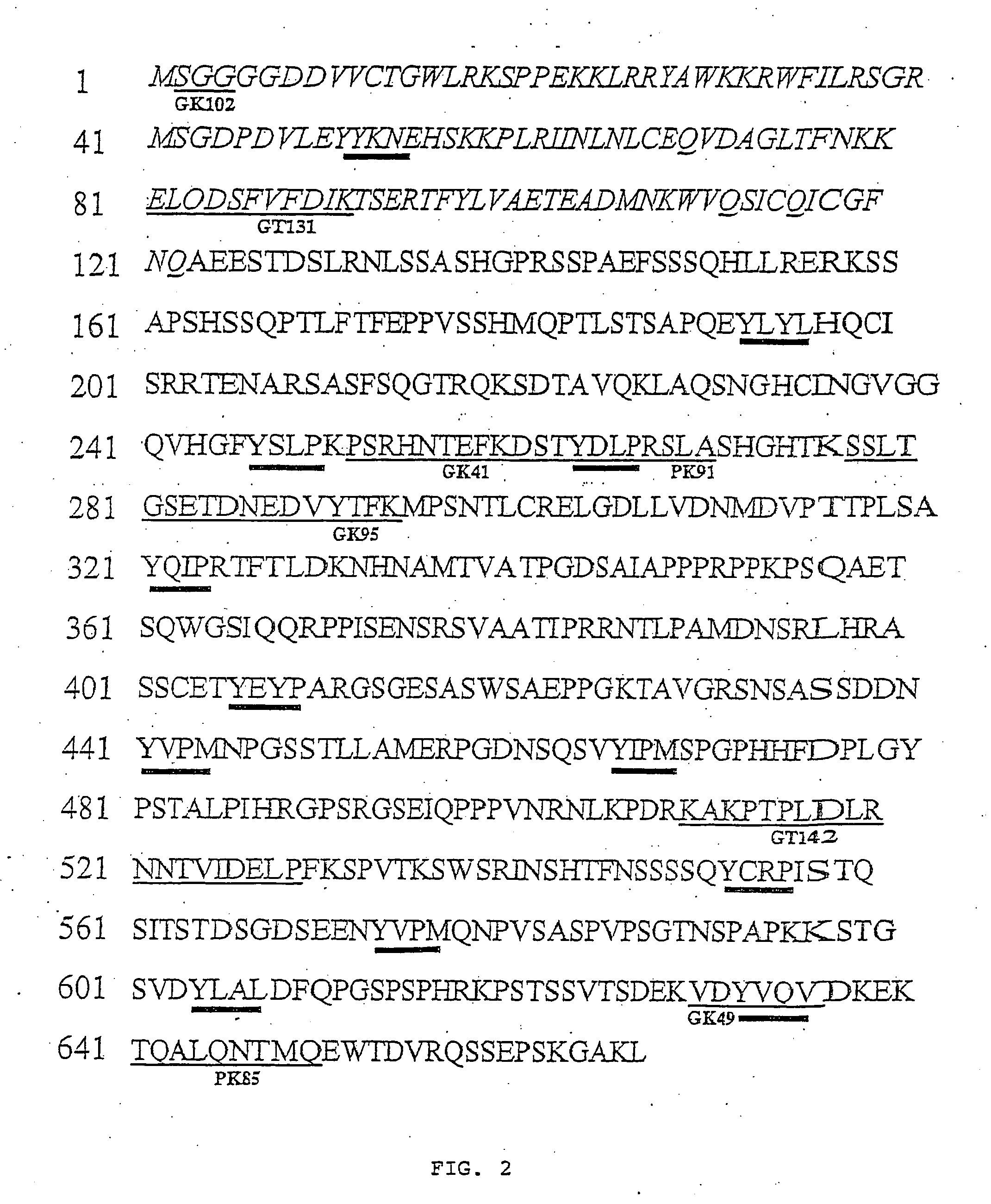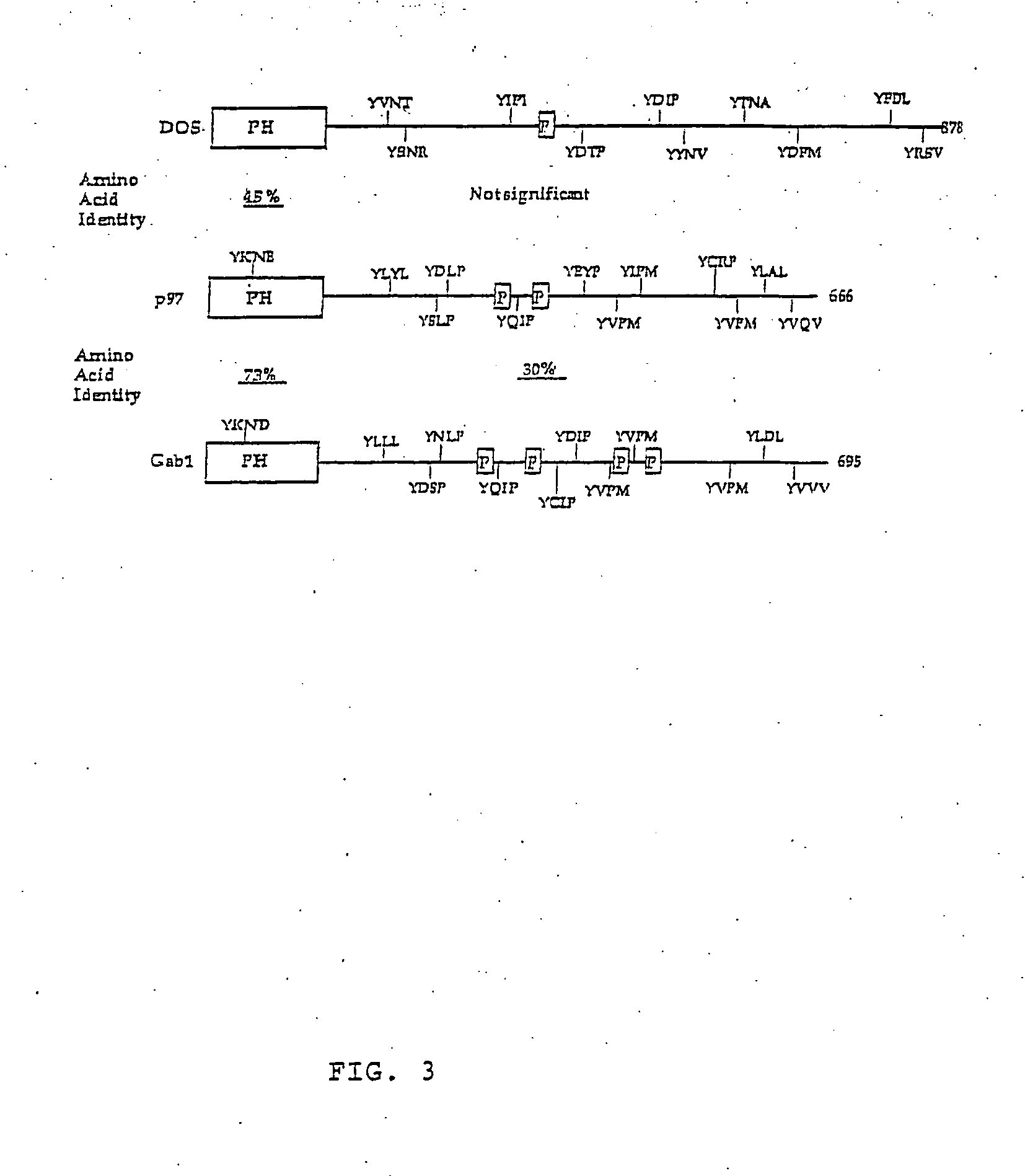Gab2 (p97) gene and methods of use thereof
a gene and gene technology, applied in the field of gab2 (p97) gene, can solve the problems of reducing antihistamines blocking the effect of mast cell degranulation, and major medical problems such as morbidity and even occasional mortality, so as to reduce the extent and the effect of treating or preventing the condition
- Summary
- Abstract
- Description
- Claims
- Application Information
AI Technical Summary
Benefits of technology
Problems solved by technology
Method used
Image
Examples
example 1
Purification and Sequencing of Gab2
[0199] Cell Culture
[0200] Cell lines were grown in RPMI / 10% FCS and the appropriate cytoline / growth factors.
[0201] Northern Blotting
[0202] Blots containing mouse tissue poly(A) RNA (Clontech, Palo Alto, Calif.) or total RNA (10 μg) from murine hematopoietic cells (provided by Dr. D. Zhang, Beth Israel Deaconess Medical Center, Boston, Mass.) were hybridized to radiolabelled cDNA probes, as indicated.
[0203] Purification and Sequencing
[0204] Gab2 was purified from ˜5×1010P210BCR-ABL BaF3 cells. Affinity-purified rabbit anti-SHP-2 antibodies (2.6 mg) were crosslinked onto protein A Sepharose beads (Harlow, E. and Lane, D., Antibodies: A Laboratory Manual (Cold Spring Harbor, New York: Cold Spring Harbor Laboratory) (1988)) using dimethylpimelimidate (Pierce, Rockford, Ill.). P210BCR-ABL BaF3 cells (4×109) were resuspended in 40 ml hypotonic buffer (HB) containing protease and phosphatase inhibitors (Timms, J. F. et al., Mol. Cell. Biol. 18, 3838...
example 2
Cloning of Gab2
[0207] Reverse transcription-polymerase chain reaction (RT-PCR) was used to obtain a cDNA fragment corresponding to peptide GT142, and this fragment was used to clone full length Gab2 cDNAs. Degenerate primers corresponding to all possible codons for the sequences KAKPTP (SEQ ID NO: 1) and TVIDEL (SEQ ID NO: 2) in peptide GT-142 (Table 1) were synthesized and used in a RT-PCR reaction with total RNA from P210BCR-ABL BaF3 cells. The expected 68 bp PCR product was subcloned into pUC19. Three inserts were sequenced and found to encode GT-142. A unique sequence (5′CCTTGACCTGAGAAACAACAC3′) (SEQ ID NO: 3) encoding the middle of GT-142 (LDLRNN)(SEQ ID NO: 4) served as the 5′primer in a 3′RACE reaction (GIBCO-BRL, Rockville, Md.), yielding a single 800 bp product. Its sequence revealed a single open reading frame containing peptides GT142, GK49 and PK85 (FIG. 2; Table 1). The 800 bp product was used as to probe a BaF3 cell cDNA library in λUniZap (provided by Dr. Alan D'Andr...
example 3
Confirmation of Gab2 cDNA
[0212] To confirm that the cDNA encoded Gab2, a vector directing expression of HA-tagged Gab2 construct (Gab2HA) was transiently transfected into BaF3 cells. BaF3 cells were washed in serum-free RPMI, resuspended at 107 cells / 0.5 ml in RPMI / 10% FCS, and incubated (10 minutes) with the indicated amounts of Gab2 expression vector and / or 20 μg of the SHP2 expression vector, the indicated amount of promoter luciferase reporter, and 20 ng of Renilla luciferase-TK reporter (Promega, Madison, Wis.).
[0213] Constructs encoding Gab2 (Gab2HA), Gab2 lacking amino acids 604-662 (Gab2ΔY2HA), and Gab2 with tyrosines 604 / 633 mutated to phenylalanine (Gab2DM), all with C-terminal HA tags, were constructed by PCR, using Gab2 cDNA as the template. PCR products were cloned into pEBB (from Dr. B. Mayer, Children's Hospital, Boston, Mass.), which directed expression under the control of the elongation factor 1-α promoter. The transfected Gab2HA fusion protein, as well as endoge...
PUM
| Property | Measurement | Unit |
|---|---|---|
| Fraction | aaaaa | aaaaa |
| Length | aaaaa | aaaaa |
| Nucleic acid sequence | aaaaa | aaaaa |
Abstract
Description
Claims
Application Information
 Login to View More
Login to View More - R&D
- Intellectual Property
- Life Sciences
- Materials
- Tech Scout
- Unparalleled Data Quality
- Higher Quality Content
- 60% Fewer Hallucinations
Browse by: Latest US Patents, China's latest patents, Technical Efficacy Thesaurus, Application Domain, Technology Topic, Popular Technical Reports.
© 2025 PatSnap. All rights reserved.Legal|Privacy policy|Modern Slavery Act Transparency Statement|Sitemap|About US| Contact US: help@patsnap.com



